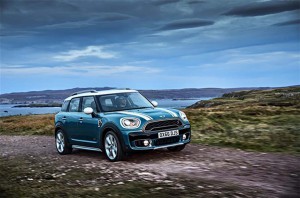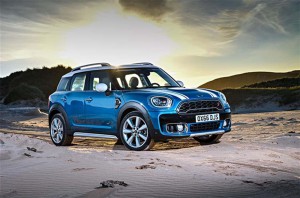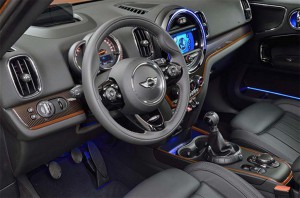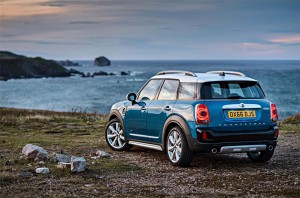
The 2017 Mini Countryman gets an injection of size and power in the new model, which is 8.1 inches longer than its predecessor.
When it first drove onto the scene in 2011, the Mini Countryman rewrote the rules for the downsized brand. And so, with the rest of the line-up growing a bit bigger this generation, it would seem only appropriate that the latest Mini ute also adds a few inches.
But it also gets the brand’s first-ever plug-in hybrid driveline – the first battery system since the all-electric Mini-E was pulled from production in 2010.
Already the biggest seller in the Mini portfolio, the British maker is hoping to take even bigger advantage of the surge in compact SUV sales with the arrival of the Countryman. Growing by 8.1 inches in length and 1.3 inches in width, it’s “not only the largest Mini we’ve ever built, but it’s also the most technologically advanced,” explains Thomas Felbermair, vice president of Mini of the Americas.
The most notable bit of new technology is that plug-in hybrid drivetrain. It pairs the turbocharged 1.5-liter three-cylinder engine found on a number of current Mini models with an 87 horsepower electric motor drawing power from a 7.6-kilowatt-hour lithium-ion battery. The entire package makes a combined 221 hp and 284 pound-feet of torque.
The system can launch you from 0 to 60 in a reasonably quick 6.8 seconds and deliver as much as 24 miles in all-electric mode. You can run on battery power alone at speeds up to 77 mph.
The plug-in uses a through-the-road all-wheel-drive approach. The I-3 drives the front wheels, the electric motor the back rubber.
Charging up will take 3.6 hours using a 220-volt charger. Mini hasn’t given specs for a 110-volt standard household outlet, but an all-night charge is likely.
(Mini muscles up with JCW Clubman. Click Here for more.)
The 134-hp three-cylinder engine alone drives the base version of the new Countryman and, for the first time, can be ordered with all-wheel-drive. On the more sporty Mini Countryman S, there’s a 189-hp 2.0-liter turbo four-cylinder. The Cooper gets a six-speed automatic, the S and eight-speed.

The new Mini Countryman looks all but identical to the outgoing model. Under the skin, it shares the same platform as the BMW X1.
Visually, the new Mini Countryman looks all but identical to the outgoing model. Under the skin, it shares the same platform as the BMW X1.
Now 169.8 inches overall, the larger dimensions – the wheelbase also grows by 2.9-inches – translates into more room for both passengers and cargo. There’s another 1.8 inches of rear legroom, for example. There’s also an extra 1.1 cubic feet in back compared to the old model and a full 5.4 cf more with the second row folded over.
Whether Mini is getting a little too, well, un-Mini is a question that could take time to answer. Sales of the brand have slowed a bit in recent months, but that’s actually more a reflection of overall trends in the U.S. market as low fuel prices depress small car sales, overall. And that might suggest that a bigger Mini Countryman could land a little closer to the mainstream this time around. Certainly the arrival of the original version defied naysayers, quickly becoming the most popular model in brand history.
(Honda Clarity hydrogen car to get 366 miles per tank. Click Here for the latest.)

The new model adopts a more conventional layout, with the speedo in the center of the driver’s display and an optional touchscreen above the center console.
Like other recent models, the new Mini Countryman adopts a more conventional layout, with the speedo moved to the center of the driver’s display. There’s now an optional touchscreen above the center console.
The maker hasn’t entirely abandoned its typically quirky ways, however, and the Countryman will offer a new “Country Timer.” Similar to the Open Timer on the Mini Convertible that clocks your time with the top down, the Country Timer will tell you just how much time you’ve spent driving on rough, slick and unpaved roads.
The Mini Cooper Countryman and Cooper S will be the first versions to roll into showrooms early next year, the plug-in to follow a few months later.
(October car sales expected to drop again. Click Here for the latest.)
We’ll have more to report from the L.A. Auto Show next month where the new Mini Countryman makes its official debut.

